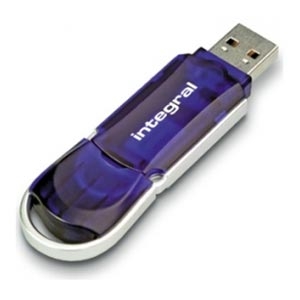
- #Usb backup flash drive how to
- #Usb backup flash drive upgrade
- #Usb backup flash drive password
- #Usb backup flash drive free
This process is known as Garbage Collection.
#Usb backup flash drive free
This difference between a 16kB write size and an 8MB erase size means that the storage device firmware needs to do some juggling when it comes time to start ERASING NAND BLOCKS in order to free up NAND PAGES for new writes from the host computer. A Flash BLOCK typically consists of 256 or 512 PAGES, so a Flash BLOCK can be up to 8 MB. The smallest unit that we can ERASE in Flash is known as a BLOCK (not to be confused with a logical block at the file system level). This is nade file-by-file, so evidently, if you first erase these files as a user, the drive can just make one big EMPTY operation, which is faster than switching between DELETE, ERASE and WRITE operations. Such behaviour however can change if you don't have enough available free space: in that case, it could be that the controller has to first DELETE then ERASE then WRITE. Then, when the drive is idle those regions with old data are being reset to ERASED = all bits are 1. Normally, a flash drive would just delete the old entry in the file table, and write the new file in a different location. Wear leveling is important, but this differentiation between ERASE and WRITE operations dominates.Īs of the citation, it seems that the controller of your particular flash drive is not well optimized. This is actually the main reason that we will write new data in unused locations. (Depending on the exact technology, '0' and '1' can be inverted). This needs a LOWER energy (lower Voltage) and is faster. A WRITE means: set some of the bits to 0. This needs a HIGH energy (that is: a high voltage) and is slow. A ERASE means: set all the cells(=bits) of that block to 1. This has to do with how Flash drives are made, physically. If we had to do an ERASE and a WRITE consecutively in order to "overwrite" a particular piece of stored data, it would greatly decrease the effective write speed experienced by the user. ERASE and WRITE are electrically different operations in Flash. If a cell has stored data, and the controller decides it needs to write new data there, the cell must first be ERASED, and then a new WRITE operation can occur at that location. In Flash, it's actually not possible to directly overwrite a particular physical data location. Just click on CLOSE to access the vault again.It has to do with HOW Flash storage (as opposed to HDD's) PHYSICALLY are made. Once the restore operation is finished, it will show the following message. Click on RESTORE for the restore operation to startħ.
#Usb backup flash drive password
Enter the Vault Password used when the backup was created.Ħ.

Note: The most recent backup will be at the top.ĥ. Select the backup to be restored and click NEXT. Other unlisted vault = Restoring to a new Vault or new flash driveĤ. USB Flash Drive = Restoring a Backup to the same Vault Choose the location to be restored from the backup file using drop-down menu and click NEXT From the Tools menu, click on Restore Data.ģ. Please make sure your vault is empty or save all files from the current vault to another location before proceeding.Ģ. The backed-up vault replaces the current vault in this process. Warning: When restoring the encrypted data from a backed-up vault, it will delete all files in the current vault. Once the backup is done you will see the below message From the Tools menu, click on Backup Data.Ģ. To BACKUP DATA in your SanDisk SecureAccess v3.0 vault, follow these steps:ġ.
#Usb backup flash drive upgrade
Mount Options: Not available without upgrade Backup Retention feature will limit the number of retained backups to the number entered and erase the oldest backup when the number is exceeded. Old backups are not deleted and consume space on the hard drive unless Enable Automatic Backup Retention feature is selected. My Documents = C:\Users\ Local User \My Documents\SanDiskSecureAccess\Backupīackup Retention: The Backup feature creates a new encrypted copy of the data on the hard drive.

Select the Locations Tab and choose your desired options.īackup Location: Saves backups to the selected locationĪpplication Data = C:\Users\ Local User \Appdata\Local\ENC Security Systems BV\SanDiskSecureAccess\Backup There are a couple of options that should be set prior to using the Backup and Restore Feature.ġ. If your flash drive is lost or damaged, you can restore and recover the vault data that you have backed up to a new flash drive. Regular backups are critically important. SecureAccess Backup feature creates an encrypted copy of your vault on your computer.
#Usb backup flash drive how to
How to Backup and Restore Data Using SanDisk SecureAccess


 0 kommentar(er)
0 kommentar(er)
